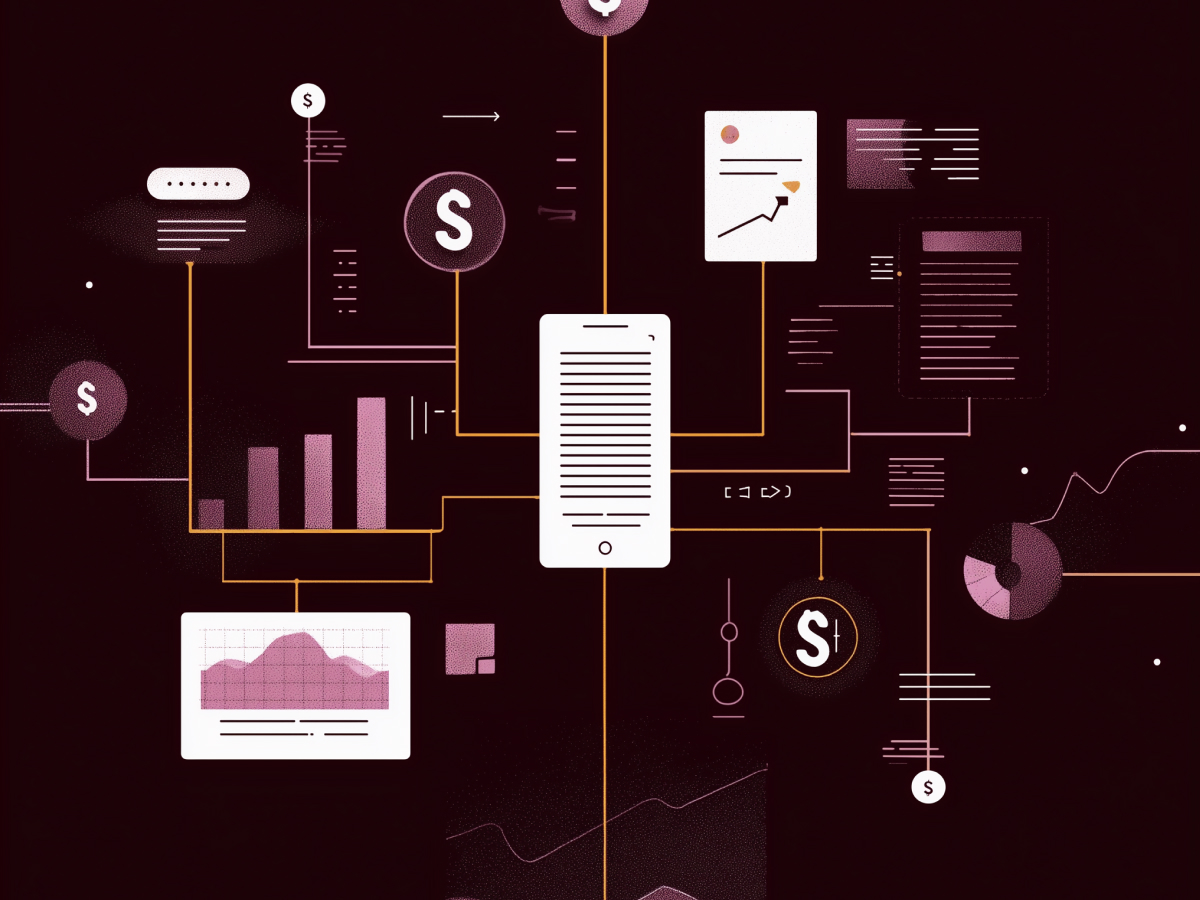Traditional customer surveys struggle to derive actionable insights from unstructured text feedback
Customer feedback surveys haven’t changed much in the past decade. Most companies still rely on structured response formats, stars, ratings, or Net Promoter Scores (NPS). These are easy to collect, easy to report. But they miss something important: what customers actually think and feel.
That insight lives in the unstructured text box at the end of surveys. The “Tell us more” part. This is the part with the richest context, but it’s usually ignored or underutilized, because it’s harder to analyze. It doesn’t plug easily into dashboards. It’s messy. Different teams handle it differently. Some prioritize it; others don’t. The result? Potentially valuable feedback gets lost in the noise.
The operational side is part of the problem. Survey platforms are inconsistent. Some are just basic forms (like Google Forms or Typeform). Others offer comprehensive analytics (like Qualtrics or Medallia). The more advanced the tool, the more structured the process, but the harder it is to customize or rethink your approach. And then there’s the people problem: teams often default to analyzing what’s easy, not what’s meaningful. NPS trends are comfortable. Free-text analysis? Not so much.
This limits your ability to extract insights that explain customer behavior. The narratives behind customers’ ratings are discarded. That’s inefficient. You get KPIs, but no context. You see the “what,” but miss the “why.”
Embedded sentiment analysis tools in survey platforms
The rise of sentiment analytics promised efficiency. Platforms started baking in natural language processing (NLP) tools to automatically categorize open responses, positive, negative, neutral. Sometimes they work. But most of the time, you don’t really know how.
These systems are black boxes. They claim to analyze nuance, tone, and context, but show very little about what’s happening under the hood. You can’t verify how a piece of feedback was classified. Did the algorithm understand sarcasm? Did it misread the tone? You just have to take its word for it.
That’s not how high-trust decision-making works. Executive teams need confidence in their data. When that confidence disappears, teams start creating shadow processes, manual reviews, re-tagging, or ignoring the AI-generated output altogether. That adds cost and complexity. And even with human-in-the-loop workflows, you’re still relying on generalist tools with limited customizability.
Add in licensing and integration costs, and the value proposition becomes questionable. You’re locked into the platform’s way of doing things, paying more for less visibility.
The ability to see into the model’s behavior, especially how it tags and interprets real customer language, is critical. Without it, even good tools become less useful in high-stakes environments.
Generative AI tools enable the creation of custom, DIY sentiment analysis solutions
We now have general-purpose AI that’s accessible, fast, and capable of real analysis. You don’t need a large platform or heavy infrastructure to understand what customers are telling you. That’s changed the game.
Here’s a simple, clear example. One user generated a synthetic dataset using ChatGPT, no customer data, so no privacy concerns. The data included basic customer interactions with an online retailer, including open-ended feedback. From there, the file was uploaded into Google Sheets. Nothing complicated.
Once in Sheets, Google’s Gemini model was used to analyze the file directly with the “Analyze this data” button. This starts a real-time interaction with your data, generating first-level insights and asking if you want to go deeper. Each prompt returns trend summaries, themes, and sentiment breakdowns. All within the spreadsheet. No switching tools. No technical integration.
That’s a capability most teams didn’t have access to twelve months ago. You’re not limited by the licensed features of your customer experience platform anymore. You can ask your own questions, validate your own hypotheses, and steer the analysis in real time. You don’t have to wait on analysts for preliminary reports. The loop from question to insight is now measured in minutes.
This approach is efficient, cost-effective, and accessible to non-technical users. It empowers teams at all levels to interrogate feedback more thoughtfully and act faster, without being locked into a vendor’s workflow.
AI-driven sentiment tools can highlight mismatches between overall ratings and free-text sentiment
Most survey systems link sentiment to a satisfaction score. If a customer gives a four out of five, the system assumes the free-text feedback is positive, or at least neutral. That creates blind spots. Because people often express frustration or suggest improvements, even when they rate the overall experience fairly high.
To test that, the author asked the same generative model, Gemini, to analyze the text feedback independently, without being influenced by the numerical scores. The result? It identified four specific entries where the sentiment in the text did not match the overall rating. That alone is a critical insight. Without this analysis, those signals would have been overlooked.
These kinds of mismatches matter. A seemingly satisfied customer who leaves critical comments may be partially retained. Or almost lost. If you know that from the beginning, you can act. This type of insight also lets customer success teams prioritize follow-up, fast, and based on actual need, not surface-level scores.
AI enhances resolution. Not just how fast you can get insights, but how sharp those insights really are. You’re not just automating categorization. You’re identifying misalignments others miss. And when you’re running at scale, that means better retention, faster course correction, and more accurate customer intelligence.
The DIY AI sentiment analysis model offers cost-effectiveness and flexibility
Not every company can justify a six-figure spend on customer experience platforms. Most small and mid-sized businesses don’t need the overhead, what they need is speed, insights, and control. That’s where the ability to build a sentiment analysis workflow using low-cost, modular tools becomes valuable.
The foundational tools are already common, Google Forms to collect responses, Google Sheets to manage the data, and Gemini or ChatGPT to process and analyze feedback. No proprietary setup. No vendor lock-in. With just those basic components, teams can perform meaningful sentiment analysis in hours, not weeks.
This approach removes layers of friction. You’re not waiting on procurement cycles to onboard a platform. You’re not spending time integrating, configuring, and training users on licensed software. What it offers is immediate functionality. The team working closest to customer insights can control the feedback loop. That alone improves the quality of insight and speed of decision-making.
For leaders in resource-constrained environments, allocating budget toward tools that provide rapid ROI is key. With DIY sentiment analysis, the benefits, operational speed, insight depth, and cost savings, are clear enough to support as a frontline strategy without additional approval layers.
AI-driven analysis of customer feedback raises data privacy and governance concerns
For all the benefits of generative AI, there are real risks, especially when it comes to handling live customer data. Most AI tools today are built on infrastructure that interacts with cloud-based models. That means anything you upload could, in the wrong configuration, be retained, reviewed, or used to retrain the model.
Enterprise-grade deployments mitigate that risk. Team or enterprise versions of tools like ChatGPT, Google Gemini, and Microsoft Copilot offer settings that disable training, enforce secure environments, and support organizational compliance. But those require proper configuration. Internal teams need to understand the settings. Executives need to back clear audit and approval processes.
Legal, compliance, and IT leadership must be involved at the start, not retroactively, before sensitive data touches any large language model. These aren’t hypotheticals. If employee experimentation with open-access tools isn’t controlled early, data leakage becomes a real and unmanaged threat.
For companies using CRM-connected generative AI or “chat with data” tools, the governance challenge scales quickly. Customer data isn’t just another dataset, it’s sensitive and often legally protected. AI adoption must move in parallel with updates to data governance frameworks, retention practices, and responsible usage guidelines.
Being early on AI experimentation is a strength. Losing control of your data is not.
AI-led sentiment analysis
Executives often prioritize what can be benchmarked, scores, percentages, year-over-year trends. These are easy to report, but shallow when standing alone. They measure outcome, not intent. AI sentiment tools change the way we engage with feedback by making qualitative analysis accessible, fast, and usable at scale.
This matters because text-based feedback tends to be more specific, more authentic, and more emotionally grounded. It tells you not just how a customer rated an experience, but why. That shift from score to story brings immediate operational value. It shortens the distance between insight and action, especially for customer-facing and product development teams.
With generative AI, qualitative analysis isn’t limited by team headcount or manual capacity. A large volume of feedback, from surveys, reviews, support emails, can now be processed and categorized in a structured way. Themes can surface across markets. Root causes can be identified rapidly. And most important: teams can respond while signals are still fresh.
For business leaders, the message is clear. Invest where context lives. Sentiment analysis has moved beyond experimentation, it’s becoming baseline. Forward-leaning organizations won’t just log feedback. They’ll understand it, and use it to drive clearer, faster operational decisions. That’s where improved customer experience, long-term retention, and better business alignment actually take shape.
The bottom line
Most teams don’t have a feedback problem, they have a signal problem. They’re collecting plenty of data but missing what actually matters. Generative AI changes that. It gives your team the ability to extract meaning from unstructured input, at speed, without needing to scale headcount or buy another enterprise platform.
This isn’t about chasing tech trends. It’s about raising the standard for how your organization listens at scale. AI can help you move from collecting responses to understanding what those responses actually mean. When done right, this unlocks faster decisions, sharper customer insight, and more efficient allocation of effort across teams.
But none of this works without intentional execution. You need clear governance, disciplined tooling, and a culture that values continuous listening over static metrics. The opportunity now isn’t just better sentiment analysis, it’s more intelligent businesses that act on what customers are really saying.





